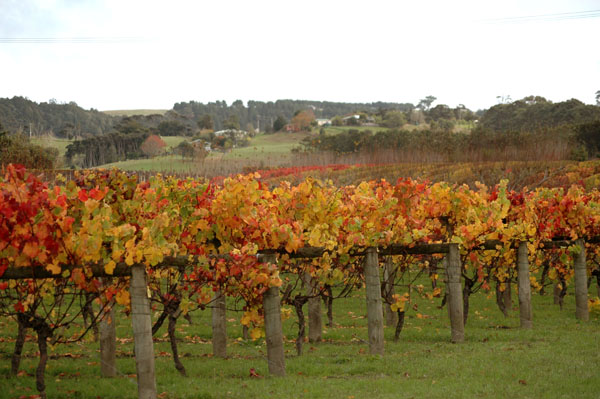Well, in most places in the northern hemisphere, the grapes are picked and well on their way to becoming wine. For most US vineyards, this happens in the month of October. It's the busy season!
Even thought they're done fruiting, the vines have been busy too! While their leaves are still green, they've been using the ol' photosynthesis to store up as many nutrients as possible. Once they're stocked up and the days get shorter and colder, their leaves will turn and drop off. (As a fascinating side-note, grapevines, rather than temperature, use the angle of the sun and length of daylight to determine when to grow and stop growing. Isn't that amazing!?)
Once the leaves fall, the remaining stems and branches (known as canes,) which are done growing, will harden and the plant will quit circulating its nutrients quite so readily. The outer layers of the vine will get very hard and brown, in order to prepare for the harshness of winter (frozen water in soft tissue would be bad news- ouch!)
At this point, they'll be dormant and ready for winter pruning (another topic for another day!)
If you're lucky enough to live somewhere with vines, go have a peek at their lovely colors before the leaves are all gone!
And thanks for sticking with me through my writing lapse. It's a goal to get back on the blogging horse!
Cheers,

 RSS Feed
RSS Feed